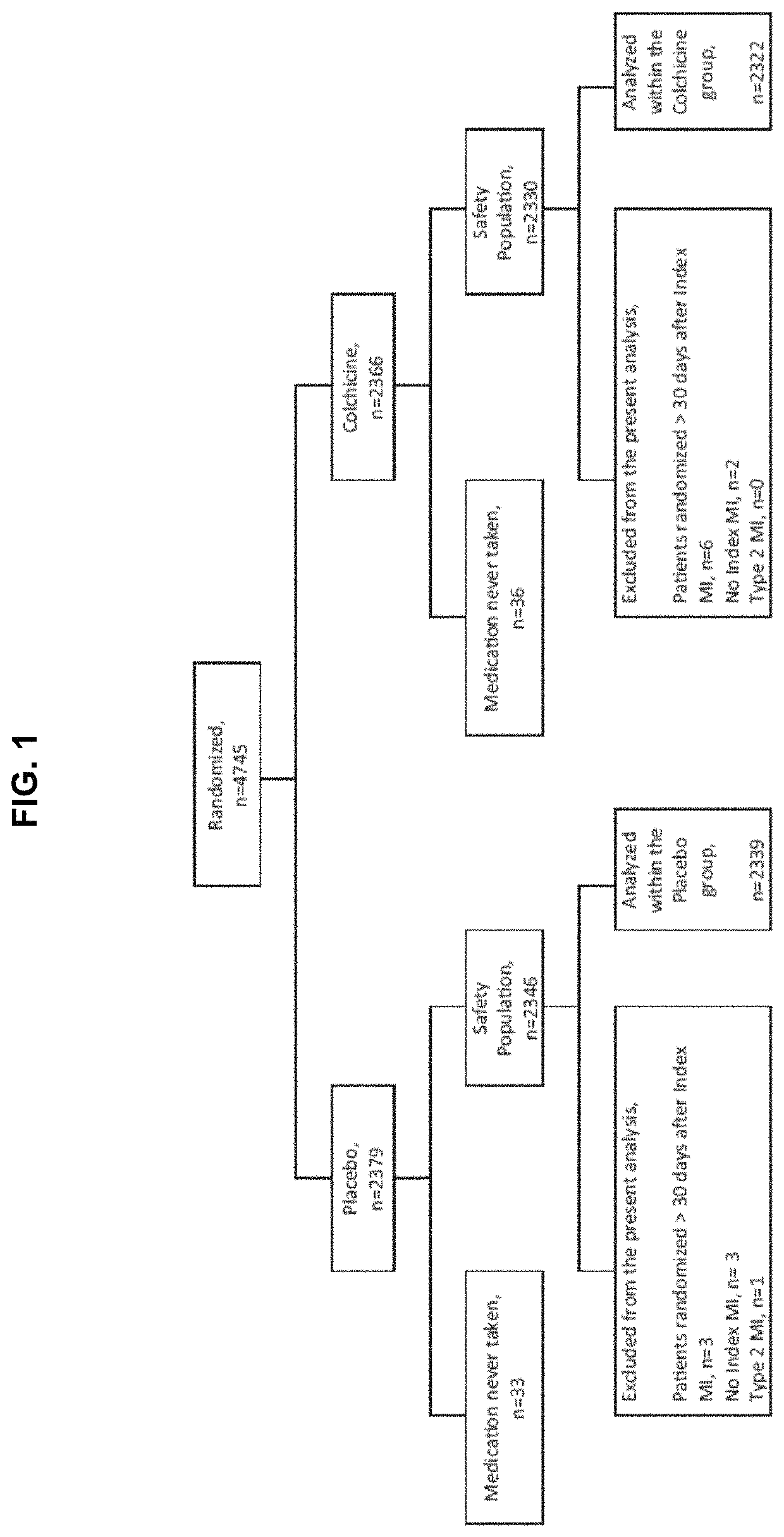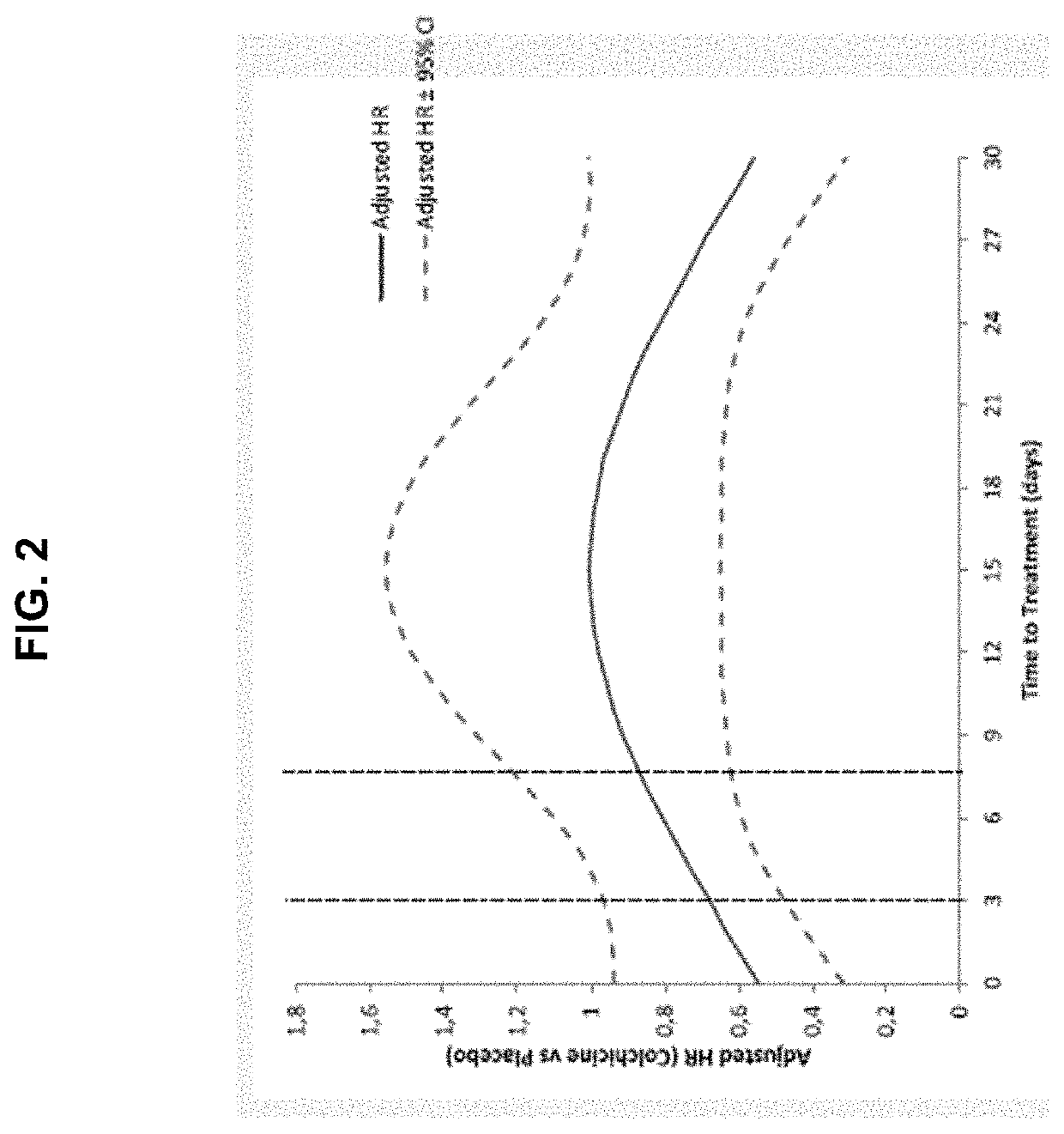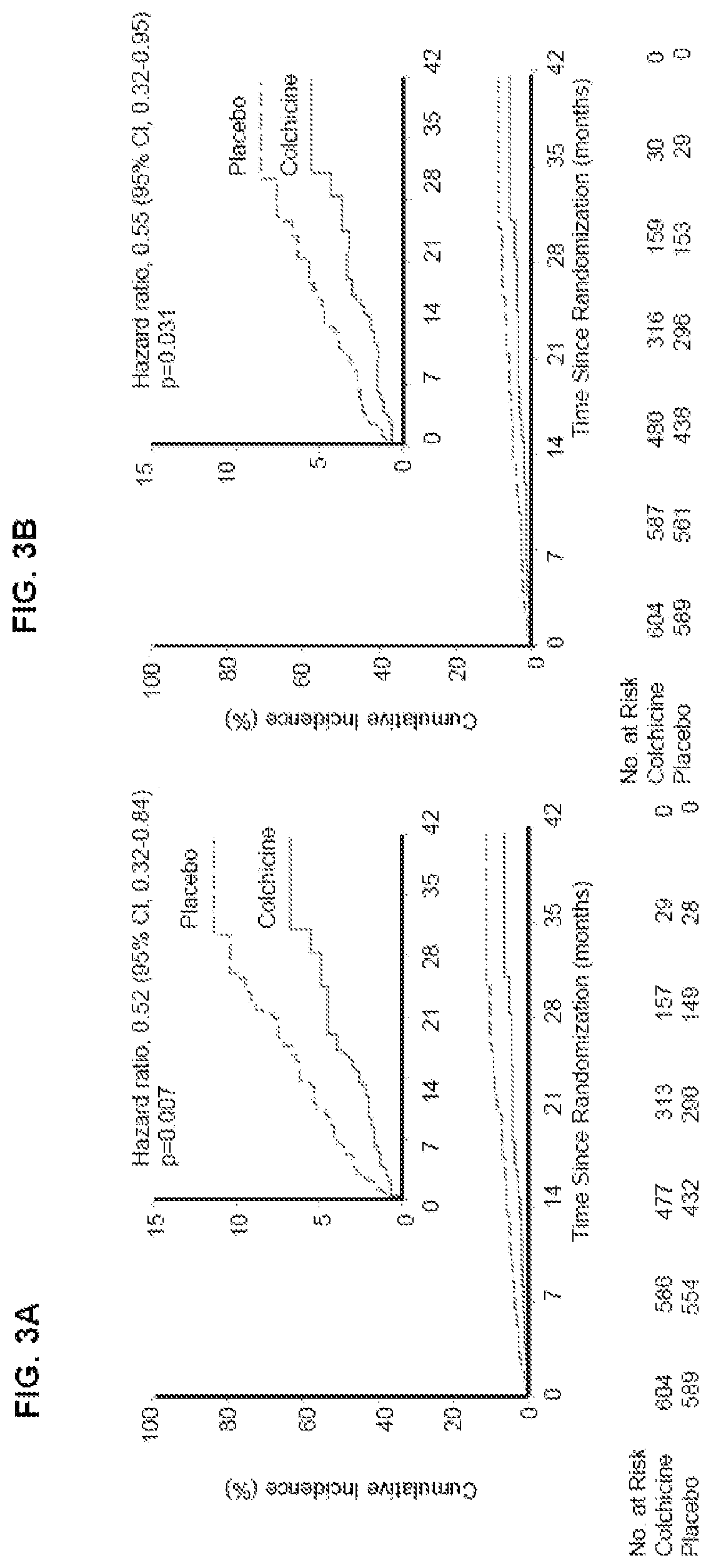Early administration of low-dose colchicine after myocardial infarction
a technology of colchicine and myocardial infarction, which is applied in the field of early administration of low-dose colchicine after myocardial infarction, can solve the problems of increasing the incidence of septic shock
- Summary
- Abstract
- Description
- Claims
- Application Information
AI Technical Summary
Benefits of technology
Problems solved by technology
Method used
Image
Examples
example 1
ysis of Randomized Controlled Trials (RCTs) of Colchicine for Secondary Prevention of Cardiovascular Disease
Data Sources
[0092]Medline (PUBMED), EMBASE, and Cochrane central were searched to identify RCTs comparing colchicine to placebo or no colchicine for secondary cardiovascular prevention (inception to Sep. 1, 2020). To maximized sensitivity, citation chasing was performed in Google Scholar, Scopus, and Web of Science. Secondary prevention was defined as patients with clinically manifest or established CAD. Query terms included “colchicine”, “coronary artery disease”, “acute coronary syndrome”, “myocardial infarction”, “cardiovascular disease”, “atherosclerosis”, and “secondary prevention”, either separately or in combination.
Study Selection, Data Extraction, and Bias Assessment
[0093]RCTs that met the following criteria were included in the meta-analysis: 1) compared daily use of low-dose (0.5 mg) colchicine to placebo or no colchicine for secondary cardiovascular prevention; 2) ...
example 2
ation of Low-Dose Colchicine after Myocardial Infarction
[0120]The results of the main COLCOT trial support that the use of colchicine in patients who have had a myocardial infarction in the past 30 days significantly improved their quality of life in several ways. The COLCOT trial was performed as follows. A randomized, double-blind trial involving patients recruited within 30 days after a myocardial infarction was performed. The patients were randomly assigned to receive either low-dose colchicine (0.5 mg once daily) or placebo. A total of 4745 patients were enrolled; 2386 patients were assigned to the colchicine group, and 2379 to the placebo group. Patients were followed for a median of 22.6 months to observe the occurrence of the primary efficacy end point which was a composite of death from cardiovascular causes, resuscitated cardiac arrest, myocardial infarction, stroke, or urgent hospitalization for angina leading to coronary revascularization. The components of the primary e...
PUM
| Property | Measurement | Unit |
|---|---|---|
| time | aaaaa | aaaaa |
| median time | aaaaa | aaaaa |
| median time | aaaaa | aaaaa |
Abstract
Description
Claims
Application Information
 Login to view more
Login to view more - R&D Engineer
- R&D Manager
- IP Professional
- Industry Leading Data Capabilities
- Powerful AI technology
- Patent DNA Extraction
Browse by: Latest US Patents, China's latest patents, Technical Efficacy Thesaurus, Application Domain, Technology Topic.
© 2024 PatSnap. All rights reserved.Legal|Privacy policy|Modern Slavery Act Transparency Statement|Sitemap



